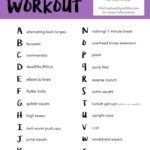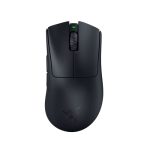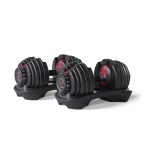Dumbbell and kettlebell workouts enhance strength, flexibility, and endurance. They offer versatile and effective training options.
Dumbbells and kettlebells are essential tools for effective workouts. Their unique shapes and designs allow for a variety of exercises targeting multiple muscle groups. Whether you aim to build muscle, lose weight, or improve overall fitness, these tools provide a comprehensive solution.
Dumbbells are great for isolated movements, while kettlebells excel in dynamic, full-body exercises. Both can be used for strength training, cardio, and flexibility routines. Incorporating them into your fitness regimen can lead to significant improvements in strength, balance, and coordination. Regular use can also help in achieving specific fitness goals more efficiently.
Introduction To Dumbbell And Kettlebell Workouts
Welcome to the world of strength training. Dumbbells and kettlebells are popular tools. They are versatile and effective. You can do many exercises with them. This makes them great for any workout routine.
Benefits Of Strength Training
- Build Muscle: Strength training helps build and tone muscles.
- Burn Calories: It boosts your metabolism and burns more calories.
- Improve Bone Health: Lifting weights strengthens bones and reduces injury risk.
- Enhance Mood: Exercise releases endorphins, improving your mood.
- Increase Flexibility: Regular workouts improve your flexibility and balance.
Differences Between Dumbbells And Kettlebells
Dumbbells and kettlebells are not the same. They have unique designs and uses. Here are the key differences:
| Feature | Dumbbells | Kettlebells |
|---|---|---|
| Shape | Evenly balanced weights on both sides of a handle. | Single weight with a handle on top. |
| Grip | Held with a neutral grip (palm facing in). | Held with a loose grip for dynamic movements. |
| Usage | Great for isolation exercises like bicep curls. | Ideal for dynamic movements like swings and snatches. |
| Weight Distribution | Evenly distributed weight. | Off-center weight, challenging stability. |
Both tools have their benefits. Choose the one that fits your goals. Whether you want to build muscle or improve flexibility, dumbbells and kettlebells can help.
Choosing The Right Equipment
Choosing the right equipment for your workout is crucial. It can impact your results and safety. Two popular options are dumbbells and kettlebells. Each has its own benefits. Let’s explore how to choose the right ones for you.
Selecting Dumbbells
When selecting dumbbells, consider the following:
- Weight Range: Start with a weight you can lift comfortably.
- Material: Dumbbells come in various materials like iron, rubber, and neoprene.
- Adjustability: Adjustable dumbbells save space and are cost-effective.
- Grip: Ensure the grip feels comfortable in your hand.
Beginners might start with lighter weights. Gradually increase the weight as you get stronger. Test the grip before purchasing. A good grip prevents accidents.
Choosing Kettlebells
Choosing kettlebells involves different factors:
- Weight: Kettlebells range from very light to very heavy. Start with a lighter weight if new.
- Handle Size: The handle should fit your hand comfortably.
- Material: Kettlebells are usually made of cast iron or steel.
- Shape: Some kettlebells have a flat bottom for stability.
Choose a kettlebell that suits your fitness level. Ensure the handle size allows for a firm grip. The right kettlebell can enhance your workout and prevent injuries.
Warm-up Exercises
Warm-up exercises are crucial before starting any dumbbell or kettlebell workout. These exercises prepare your muscles and joints for the intense workout ahead. They also reduce the risk of injury. Here, we focus on two essential components: Dynamic Stretches and Joint Mobility Drills.
Dynamic Stretches
Dynamic stretches involve active movements that stretch your muscles. These stretches increase your heart rate and blood flow.
- Leg Swings: Swing your legs back and forth. Do 10 reps per leg.
- Arm Circles: Rotate your arms in circular motions. Do 15 circles each direction.
- Torso Twists: Twist your torso from left to right. Complete 20 twists.
Joint Mobility Drills
Joint mobility drills focus on moving the joints through their full range of motion. These drills prepare your joints for the workout.
| Exercise | Description | Reps |
|---|---|---|
| Hip Circles | Rotate your hips in a circular motion. | 10 each direction |
| Shoulder Rolls | Roll your shoulders forward and backward. | 15 each direction |
| Ankle Rotations | Rotate your ankles clockwise and counterclockwise. | 10 each direction |
Incorporating both Dynamic Stretches and Joint Mobility Drills ensures a well-rounded warm-up. This prepares your body for the demanding dumbbell and kettlebell workout.
Dumbbell Exercises
Dumbbell exercises are a fantastic way to build muscle and strength. They offer versatility and can target various muscle groups. Dumbbells are excellent for both beginners and advanced fitness enthusiasts.
Upper Body Workouts
Dumbbells are ideal for upper body workouts. They help build muscle and improve strength.
- Bicep Curls: Stand straight with a dumbbell in each hand. Curl the weights while keeping elbows close to your torso.
- Shoulder Press: Sit or stand with a dumbbell in each hand. Press the weights overhead until your arms are fully extended.
- Tricep Extensions: Hold a dumbbell with both hands. Raise it over your head, then lower it behind your neck by bending your elbows.
- Chest Press: Lie on a bench with a dumbbell in each hand. Press the weights above your chest until your arms are straight.
Lower Body Workouts
Dumbbells can also be used for effective lower body workouts. They strengthen legs and improve balance.
- Squats: Hold a dumbbell in each hand. Lower your body into a squat position, then rise back up.
- Lunges: Step forward with one leg while holding a dumbbell in each hand. Lower your body until both knees are at 90 degrees, then return to the starting position.
- Deadlifts: Hold a dumbbell in each hand. Bend at your hips and knees, lowering the weights to the ground, then stand back up.
- Calf Raises: Stand with a dumbbell in each hand. Raise your heels off the ground, then lower them back down.
Kettlebell Exercises
Kettlebell exercises are great for building strength and endurance. They target multiple muscle groups and improve overall fitness. Let’s explore some effective kettlebell exercises.
Full-body Movements
Full-body movements engage many muscle groups at once. This makes your workout efficient and challenging.
- Kettlebell Swing
Stand with feet shoulder-width apart. Hold the kettlebell with both hands. Swing it between your legs. Then, swing it up to chest level. Repeat for 15-20 reps.
- Kettlebell Clean and Press
Start with the kettlebell on the ground. Lift it to shoulder height. Press it overhead. Lower it back to the ground. Repeat for 10-12 reps each side.
- Kettlebell Goblet Squat
Hold the kettlebell close to your chest. Squat down, keeping your back straight. Stand up and repeat. Do 15-20 reps.
Core Strengthening Moves
Core exercises with kettlebells enhance your stability and balance.
- Kettlebell Russian Twist
Sit on the ground with knees bent. Hold the kettlebell with both hands. Twist your torso to the right, then to the left. Do 20-30 reps.
- Kettlebell Windmill
Stand with feet wide apart. Hold the kettlebell overhead with one hand. Bend at the waist and touch the opposite foot with the other hand. Repeat for 10-12 reps each side.
- Kettlebell Plank Row
Get into a plank position with a kettlebell in each hand. Row one kettlebell to your side, then switch. Do 10-15 reps each side.

Credit: www.crockpotempire.com
Combining Dumbbells And Kettlebells
Combining dumbbells and kettlebells can create a powerful workout routine. This combination helps in building strength, endurance, and flexibility. Using both tools targets different muscle groups efficiently. Let’s explore how to create a balanced routine and some sample workout plans.
Creating A Balanced Routine
A balanced routine includes a mix of exercises for different muscle groups. Combining dumbbells and kettlebells ensures a full-body workout. Here are some tips for creating a balanced routine:
- Warm-up: Start with a 5-10 minute warm-up. This can include jumping jacks or light jogging.
- Upper Body: Use dumbbells for exercises like bicep curls and shoulder presses.
- Lower Body: Incorporate kettlebell swings and goblet squats.
- Core: Add Russian twists and planks with either equipment.
- Cool Down: Finish with stretching exercises to improve flexibility.
Sample Workout Plans
Here are two sample workout plans. These plans combine dumbbells and kettlebells for a full-body workout.
| Day | Exercise | Equipment | Reps |
|---|---|---|---|
| Monday | Bicep Curls | Dumbbells | 3 sets of 12 reps |
| Monday | Kettlebell Swings | Kettlebell | 3 sets of 15 reps |
| Wednesday | Shoulder Press | Dumbbells | 3 sets of 10 reps |
| Wednesday | Goblet Squats | Kettlebell | 3 sets of 12 reps |
Another plan can include:
- Warm-up: 5 minutes of light cardio.
- Dumbbell Bench Press: 3 sets of 10 reps.
- Kettlebell Deadlift: 3 sets of 15 reps.
- Dumbbell Rows: 3 sets of 12 reps.
- Kettlebell Clean and Press: 3 sets of 10 reps.
- Cool Down: 5 minutes of stretching.
By combining dumbbells and kettlebells, you create a versatile and effective workout routine. This routine targets multiple muscle groups and keeps your workouts exciting.
Safety Tips
Working out with dumbbells and kettlebells can be very effective. But safety should always come first. Knowing how to use these tools correctly is key. Below are some important safety tips to keep in mind.
Proper Form Techniques
Maintaining the proper form is crucial for preventing injuries. Always keep your back straight. This reduces the risk of back pain.
Hold the weights firmly but not too tight. Your grip should be secure yet comfortable. Breathe in while lifting and breathe out while lowering the weights.
Follow these tips to ensure you have the proper form:
- Keep your back straight.
- Engage your core muscles.
- Use slow and controlled movements.
- Breathe properly during each lift.
Avoiding Common Injuries
Common injuries can be avoided by following these simple steps. Always warm up before you start your workout. This prepares your muscles and joints.
Don’t lift weights that are too heavy for you. Start with lighter weights and gradually increase. This helps prevent muscle strain.
Here is a table summarizing ways to avoid common injuries:
| Injury | Prevention Tips |
|---|---|
| Muscle Strain | Start with lighter weights, warm up properly |
| Back Pain | Maintain a straight back, engage core muscles |
| Wrist Pain | Hold weights firmly but not too tight |
Follow these tips to enjoy a safe and effective workout. Always listen to your body and stop if you feel pain.

Credit: www.pinterest.com
Progress Tracking
Tracking progress is vital for any workout plan. It helps you see how far you’ve come. This is true for both dumbbell and kettlebell workouts. Knowing your progress can boost your motivation. It can also help you reach your fitness goals faster.
Measuring Strength Gains
Measuring strength gains is easy. Use a simple tracking method. Write down the weight you use for each exercise. Note the number of sets and reps. This helps you see improvement over time.
You can also measure your progress with a fitness app. Many apps let you log your workouts. These apps can show your strength gains with charts. They can also remind you of your goals.
Another way to measure strength is by testing your one-rep max. This is the heaviest weight you can lift once. Test this every few weeks. It shows your strength gain clearly.
Adjusting Your Routine
Adjusting your routine is key for continuous progress. If you don’t change your workout, your progress may stop. Change your exercises every few weeks. This keeps your muscles guessing and growing.
You can also increase the weight you lift. Try to lift heavier weights every week. This will challenge your muscles and help them grow stronger.
| Week | Exercise | Weight | Sets | Reps |
|---|---|---|---|---|
| 1 | Kettlebell Swing | 20 lbs | 3 | 10 |
| 2 | Kettlebell Swing | 25 lbs | 3 | 12 |
| 3 | Kettlebell Swing | 30 lbs | 3 | 15 |
Changing your routine can also mean adding new exercises. Try new dumbbell and kettlebell moves. This keeps your workout interesting and effective.
Conclusion And Next Steps
You’ve learned the basics of dumbbell and kettlebell workouts. Now, it’s time to set goals and continue learning. This will help you stay motivated and grow stronger.
Setting Future Goals
Having clear goals can make your workouts more effective. Here are some tips to set your future fitness goals:
- Be Specific: Define what you want to achieve.
- Measurable: Use numbers to track your progress.
- Achievable: Set realistic goals you can reach.
- Relevant: Make sure your goals fit your lifestyle.
- Time-bound: Set a deadline to reach your goals.
For example, aim to lift 5kg more in three months. You could also aim to increase your workout duration by 10 minutes in a month.
Continued Education Resources
Learning never stops. Here are some resources to help you continue your fitness journey:
| Resource Type | Description |
|---|---|
| Books | Read books on strength training and fitness. |
| Online Courses | Enroll in courses that teach advanced techniques. |
| Fitness Blogs | Follow blogs for tips and new workouts. |
| Videos | Watch videos for visual guidance. |
Here are some recommended books:
- Starting Strength by Mark Rippetoe
- The New Rules of Lifting by Lou Schuler
For online courses, websites like Udemy and Coursera offer great options. YouTube also has plenty of fitness channels to follow.
Staying informed will keep you motivated and help you achieve your goals. Keep learning and stay dedicated!

Credit: www.pinterest.com
Frequently Asked Questions
Can You Build Muscle With Dumbbells And Kettlebells?
Yes, you can build muscle with dumbbells and kettlebells. They offer versatile resistance training, essential for muscle growth.
Can I Do A Kettlebell Workout With A Dumbbell?
Yes, you can use a dumbbell for a kettlebell workout. Ensure proper grip and adjust your technique accordingly.
Can I Do Kettlebell Swings With A Dumbbell?
Yes, you can do kettlebell swings with a dumbbell. Hold the dumbbell with both hands. Swing it between your legs and up to shoulder height. Keep your movements controlled. Ensure proper form to avoid injury.
Does Kettlebell Tone Your Body?
Yes, kettlebell workouts effectively tone your body. They target multiple muscle groups, improving strength and endurance.
Conclusion
Elevate your fitness journey with dumbbell and kettlebell workouts. These tools boost strength, flexibility, and endurance. Incorporate them into your routine for optimal results. Enjoy the benefits of a versatile and effective exercise regimen. Start today and transform your workout experience.




